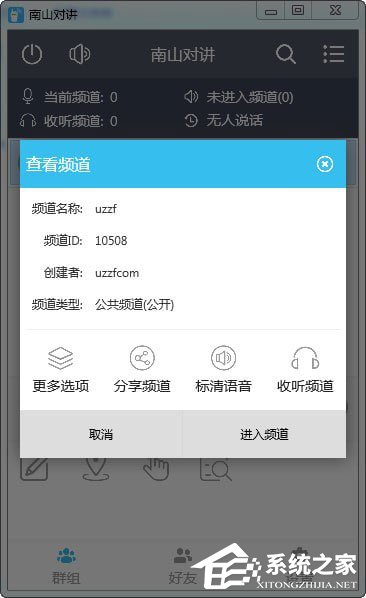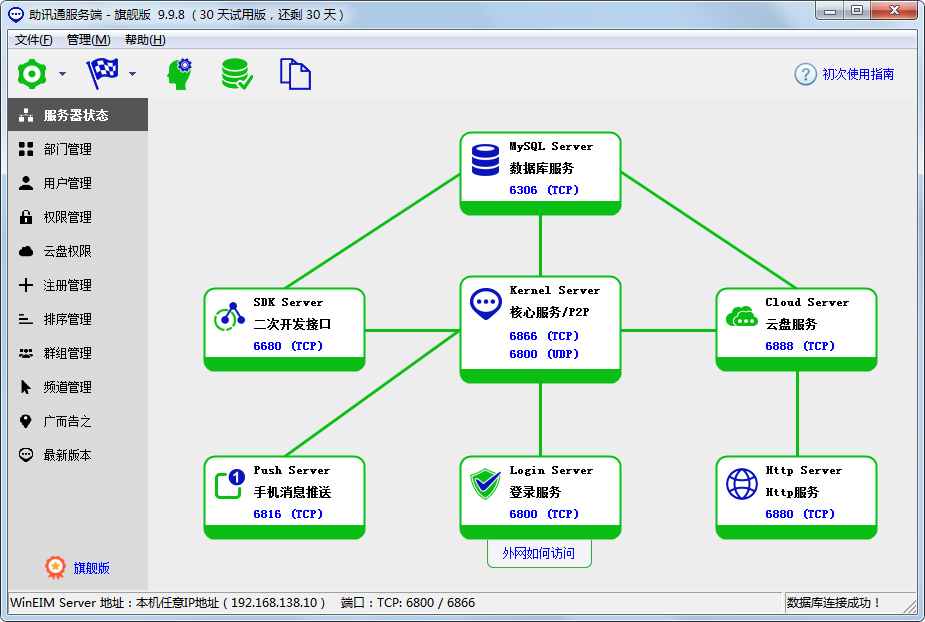字符编码、文件处理
时间:2022-05-11 06:39
字符编码
字符编码,针对的是文字,只跟文本文件有关,与视频文件、音频文件无关
文本编辑器的输入和输出是两个过程,文本编辑包含输入和输出两个过程
人在操作计算机的时候,输入的是人能够看懂的字符,但是计算机只能识别0110这样的二进制数据,那么输入的字符肯定通过‘字符编码表‘转换成二进制数据
任何国家想要让计算机识别本国语言,都必须创建一个本国的字符编码表
编码:
把人编辑的文字转换成计算机能识别的二进制数
解码:
把计算机能识别的二进制数转化成人能看懂的文字
乱码:
现象是字符不能正常显示,原因是编码和解码使用的字符编码不一样
怎么编码的就怎么解码,肯定不会乱码
字符编码表记录着字符与数字的对应关系
世界第一个字符编码表是‘ASCII码表‘,美国人发明,由八位二进制表示一个英文字符,一共有2**8-1=255种字符与二进制数的对应关系
八位二进制数也叫8bit
8bit = 1Bytes(1个字节)
1024Bytes = 1KB
1024KB = 1MB
1024MB = 1GB
1024GB = 1TB
1024TB = 1PB
‘GBK‘,由中国人发明,由2Bytes(十六位二进制数)表示一个中文字符,一共有2**16-1=65535中字符与二进制数的对应关系,其中英文字符还是由八位二进制数表示(兼容ASCII)
Unicode万国码,统一用2Bytes(十六进制数表示)一个字符,一共有2**16-1=65535种字符与二进制数的对应关系
unicode编码的两个特点:
1.兼容万国字符
2.Unicode编码表,与其它各个国家的编码都有对应关系(通过utf-8分化/统一),这也是发明此编码的目的
所有国家使用Unicode编码会导致的问题:
1.浪费存储空间
2.增加I/O次数,程序运行效率降低
当内存中的数据存到硬盘的时候,会按照‘utf-8编码‘(nicode transformation formate):
1.会将Unicode编码的英文字符由2Bytes变成1Bytes
2.会将Unicode编码的中文字符由2Bytes变成3Bytes
...
现在计算机存储字符编码:
内存中都Unicode编码
硬盘中都是utf-8
内存中的数据由内存保存到硬盘:
应用程序编码 >>> 内存中的Unicode格式的二进制数(默认) >>>(encode)>>> 硬盘中的utf-8格式的二进制数据
硬盘中的数据由硬盘读取到内存:
硬盘中的utf-8格式的二进制数据 >>>(decode)>>> 内存中的Unicode格式的二进制数 >>> 应用程序编码
python2与python3:
python2默认使用ASCII码(因为在开发python2的时候Unicode使用还不广泛),为了兼容各国语言,python2新增Unicode数据类型
python3中默认使用Unicode编码,使用utf-8
文件头:
每个python文件的开头最好都标识,-*- coding:utf-8 -*—
1.因为所有的编码都支持英文字符,所以文件头才能生效
指定编码:
1.编辑器或者应用程序指定
2.文件头标识
3.定义变量的时候指定, x = u‘上‘
ps:
1.pycharm默认使用Unicode编码
2.基于python解释器开发的软件,只要是中文,前面都需要加一个 u,为的就是让python2使用Unicode把中文存储到内存,而不使用python2默认的ASCII编码,或者文件头指定的编码
#encode,编码,将内存中的Unicode格式的二进制数据编码成可以存储和传输的utf-8的二进制数据,存储到硬盘
s = ‘上‘
print(s.encode(‘utf-8‘)) #b‘\xe4\xb8\x8a‘
print(type(s.encode(‘utf-8‘))) #,二进制数据类型
#bytes()函数,数据类型的转化,本质上是
s = ‘上‘
print(s.encode(‘utf-8‘))
print(type(bytes(s,encoding=‘utf-8‘))) #
#decode,解码,将硬盘中的utf-8格式的二进制数据解码成Unicode格式的二进制数据
res1 = s.encode(‘utf-8‘)
res2 = res1.decode(‘utf-8‘)
print(res2) #‘上‘
#使用str()函数,数据类型的转化,本质上是
res1 = s.encode(‘utf-8‘)
res2 = str(res1,encoding=‘utf-8‘)
print(res2) #上
文件处理
文件:
操作系统提供给用户操作(保存/读取)复杂硬件(硬盘)的简单的接口
操作文件:
应用程序需要永久的保存数据或者临时读取数据
#程序操作文件方法一:
#打开文件,r取消转义,应用程序想要操作硬盘/文件,使用open()函数
f = open(r‘E:\python_test\a.txt.py‘,encoding=‘utf-8‘) #Windows操作系统默认使用gbk编码
print(f) #f是文件对象,遥控器(文件句柄)
#读文件
print(f.read()) #读取文件对象
f.close() #告诉操作系统,关闭文件对象
#程序操作文件方法二:
#自动close()
#支持多次open()
with open(r‘E:\python_test\a.txt.py‘,encoding=‘utf-8‘) as f , open(r‘E:\python_test\b.txt.py‘,encoding=‘utf-8‘) as g , open(r‘E:\python_test\c.txt.py‘,encoding=‘utf-8‘) as h:
print(f)
print(f.read())
文件处理的模式mode
r 只读模式,默认
w 只写模式
a 只追加模式(只能在文件末尾添加内容)
r、w、a这三个模式为纯净模式
r+ 可读可追加
w+
a+
操作文件单位
t 文本文件,默认,需要指定encoding参数,如果不指定的话,那么默认是操作系统的编码
b 二进制,一定不能指定encoding参数,该模式通常用来处理非文本文件,直接存储网络上传输来的二进制数据
with open(r‘E:\python_test\test‘,mode=‘rt‘,encoding=‘utf-8‘) as f:
print(f.readable()) #True
print(f.writable()) #False
print(f.read()) #将文件内容全部读出
print(f.write()) #TypeError:
r模式
#文件不存在直接报错
with open(r‘E:\python_test\test1‘,mode=‘r‘,encoding=‘utf-8‘) as f:
print(f) #FileNotFoundError:
#相对路径
with open(r‘E:\python_test\test‘,mode=‘r‘,encoding=‘utf-8‘) as f:
print(f) #<_io.BufferedReader name=‘E:\\python_test\\test‘>
with open(r‘test‘,mode=‘r‘) as f:
print(f) #<_io.BufferedReader name=‘test‘>,路径文件和本文件在同一层的话,可以使用相对路径
#读文件时的光标
with open(r‘E:\python_test\test‘,mode=‘r‘,encoding=‘utf-8‘) as f:
print(‘>>>1: ‘)
print(f.read())
print(‘>>>2: ‘)
print(f.read())
>>>1:
b"\n\n\n\n\n\n\n\n\n\n\n\n\n\n\n\ns..."
>>>2:
b‘‘
#readlines()函数
with open(r‘E:\python_test\test‘,encoding=‘utf-8‘,mode=‘r‘) as f:
print(f.readlines()) #[‘第一行\n‘, ‘第二行\n‘, ‘第三行\n‘]
#f 是可以被for循环的,可以解决read()函数一次读取文件到内存的内存的占用问题
with open(r‘E:\python_test\test‘,encoding=‘utf-8‘,mode=‘r‘) as f:
for i in f:
print(i)
第一行
第二行
第三行
#readline()函数
with open(r‘E:\python_test\test‘,encoding=‘utf-8‘,mode=‘r‘) as f:
print(f.readline())
print(f.readline())
print(f.readline())
print(f.readline()) #打印空行
print(f.readline()) #打印空行
#\r\n: 换行符,等于 \r
w模式
#文件不存在的话,直接创建,再编辑
with open(r‘xxx.txt‘,encoding=‘utf-8‘,mode=‘w‘) as f:
print(f) #<_io.TextIOWrapper name=‘xxx.txt‘ mode=‘w‘ encoding=‘utf-8‘>
#文件存在的话,先清空文件内容,再编辑
with open(r‘xxx.txt‘,encoding=‘utf-8‘,mode=‘w‘) as f:
print(f.readable()) #False
print(f.writable()) #True
f.write(‘今天的天气不错‘)
#写多行
with open(r‘xxx.txt‘,encoding=‘utf-8‘,mode=‘w‘) as f:
f.write(‘今天的天气不错\n‘)
f.write(‘今天的天气不错\n‘)
f.write(‘今天的天气不错\r‘)
f.write(‘今天的天气不错\r‘)
#writelines()函数
l = [‘111‘,‘222‘,‘333‘] #容器类型
with open(r‘E:\python_test\xxx.txt‘,mode=‘w‘,encoding=‘utf-8‘) as f:
print(f.writelines(l)) #111222333
l = [‘1111‘,‘2222‘,‘3333‘]
with open(r‘E:\python_test\xxx.txt‘,mode=‘w‘,encoding=‘utf-8‘) as f:
for i in l:
f.write(i)
a模式 -- 只追加
#文件不存在的话,直接创建,再编辑
with open(r‘E:\python_test\xxxx.txt‘,mode=‘a‘,encoding=‘utf-8‘) as f:
print(f) #<_io.TextIOWrapper name=‘E:\\python_test\\xxxx.txt‘ mode=‘a‘ encoding=‘utf-8‘>
#文件存在的话,不会清空文件内容,追加(光标在原来文件的末尾)
with open(r‘E:\python_test\xxx.txt‘,mode=‘a‘,encoding=‘utf-8‘) as f:
print(f.readable()) #False
print(f.writable()) #True
#光标
with open(r‘E:\python_test\xxxx.txt‘,mode=‘a‘,encoding=‘utf-8‘) as f:
f.write(‘大灰狼‘)
r+模式
#可读,只追加写
with open(r‘E:\python_test\xxx.txt‘,mode=‘r+‘,encoding=‘utf-8‘) as f:
print(f.readable()) #True
print(f.writable()) #True
print(f.read()) #...
print(f.write(‘\n233‘)) #返回字符数
#只追加写
with open(r‘E:\python_test\xxx.txt‘,mode=‘r+‘,encoding=‘utf-8‘) as f:
print(f.readline())
f.write(‘\nhahaha‘)
print(f.write(‘哈‘)) #打印函数返回值,f被写入两次,在最后追加
w+模式
#可(读),覆盖写
#该模式下,先清空文件,再(读)或者覆盖写
with open(r‘E:\python_test\xxx.txt‘,mode=‘w+‘,encoding=‘utf-8‘) as f:
print(f.readable()) #True
print(f.writable()) #True
print(f.read())
print(f.write(‘哈哈哈‘)) #文件被覆盖
with open(r‘E:\python_test\xxxx.txt‘,mode=‘w+‘,encoding=‘utf-8‘) as f:
f.readline()
print(f.write(‘哈‘)) #文件被覆盖
a+模式
#可(读),追加写
with open(r‘E:\python_test\xxx.txt‘,mode=‘a+‘,encoding=‘utf-8‘) as f:
print(f.readable()) #True
print(f.writable()) #True
print(f.read())
print(f.write(‘\n哈哈哈‘))
with open(r‘E:\python_test\xxxx.txt‘,mode=‘a+‘,encoding=‘utf-8‘) as f:
f.readline()
print(f.write(‘哈‘))
1哈
2哈
3哈 #只在最后追加
r+b模式
#可(读),追加写
with open(r‘E:\python_test\xxx.txt‘,mode=‘r+b‘) as f:
print(f.readable()) #True
print(f.writable()) #True
print(f.read()) #b‘hahahahahahahahaha‘
print(f.write(b‘\xe5\xa4\xa7‘)) #返回值为写入了多少字节
#覆盖写
with open(r‘E:\python_test\xxxx.txt‘,mode=‘r+b‘) as f:
f.readline()
print(f.write(b‘\xe5\xa4\xa7‘))
hahahahahaha
大aha大
文件内光标的移动
#rt模式
#mode可以省略
#rt模式下,read()内的数字才表示要读取的字符的个数、字节的个数
#如果不是在rt模式下,数字表示的都是字节
with open(r‘E:\python_test\xxxx.txt‘,‘r‘,encoding=‘utf-8‘) as f:
print(f.read(5)) #大灰狼大灰
#rb模式
#中文在utf-8中,一个中文字符是3个字节,一个英文字符是1个字节
with open(r‘E:\python_test\xxxx.txt‘,‘rb‘) as f:
print(f.read(3)) #读3个字节,一个中文3个字节,b‘\xe5\xa4\xa7‘
print(f.read(3).decode(‘utf-8‘)) #灰
print(f.read(3).decode(‘utf-8‘)) #狼,注意光标
#seek()函数
#offset:相对偏移量,字节数
#whence:参考对象
0:参考文件开头 t、b模式都可以使用
1:参考光标所在的当前位置 b模式才能使用
2:参考文件的末尾 b模式才能使用
r模式下的seek()函数
#rt模式下的seek(N,0)函数
with open(r‘E:\python_test\xxxx.txt‘,‘r‘,encoding=‘utf-8‘) as f:
print(f.read(1)) #大
f.seek(6,0) #注意中英文混杂的情况
print(f.read(3)) #狼sh
with open(r‘E:\python_test\xxxx.txt‘,‘r‘,encoding=‘utf-8‘) as f:
print(f.read(3)) #大灰狼
f.seek(9,0)
print(f.read()) #shift
#rb模式下的seek(N,0)函数
#read()、seek()函数内的数字都表示字节
#注意一个中文是3个字节
with open(r‘E:\python_test\xxxx.txt‘,‘rb‘) as f:
print(f.read(3).decode(‘utf-8‘)) #大
f.seek(9,0)
print(f.read()) #b‘shift‘
#rt模式下的seek(N,1)函数
with open(r‘E:\python_test\xxxx.txt‘,‘r‘,encoding=‘utf-8‘) as f:
print(f.read(3))
f.seek(2,1) #不支持
print(f.read(1))
#rb模式下的seek(N,1)函数
with open(r‘E:\python_test\xxxx.txt‘,‘rb‘) as f:
print(f.read(9).decode(‘utf-8‘)) #大灰狼
f.seek(2,1)
print(f.read(1)) #b‘i‘
#rt模式下的seek(N,2)函数
with open(r‘E:\python_test\xxxx.txt‘,‘r‘,encoding=‘utf-8‘) as f:
print(f.read(8))
f.seek(-3,2)
print(f.read(1)) #不支持
#rb模式下的seek(N,2)函数
with open(r‘E:\python_test\xxxx.txt‘,‘rb‘) as f:
print(f.read().decode(‘utf-8‘)) #大灰狼shift
f.seek(-3,2)
print(f.read(1)) #b‘i‘
with open(r‘E:\python_test\xxxx.txt‘,‘rb‘) as f:
print(f.read(9).decode(‘utf-8‘)) #大灰狼
f.seek(-3,2)
print(f.read(1)) #b‘i‘
w模式下的seek()函数
#先清空文件,再编辑
with open(r‘E:\python_test\xxxx.txt‘,‘w‘,encoding=‘utf-8‘) as f:
f.seek(3,0) #没有意义
print(f.write(‘233‘))
a模式下的seek()函数
#只能追加到文件的末尾
with open(r‘E:\python_test\xxxx.txt‘,‘a‘,encoding=‘utf-8‘) as f:
f.seek(3,0) #没有意义
print(f.write(‘233‘))
r+模式下的seek()函数
#从指定位置开始,逐个替换
with open(r‘E:\python_test\xxxx.txt‘,‘r+‘,encoding=‘utf-8‘) as f:
f.seek(9,0)
f.write(‘233‘) #大灰狼233ft
w+模式下的seek()函数
#覆盖写
with open(r‘E:\python_test\xxxx.txt‘,‘w+‘,encoding=‘utf-8‘) as f:
f.seek(9,0)
f.write(‘233‘) #233
a+模式下的seek()函数
#追加写
with open(r‘E:\python_test\xxxx.txt‘,‘a+‘,encoding=‘utf-8‘) as f:
f.seek(9,0)
f.write(‘233‘) #大灰狼shift233
检测文件内容
#time函数
import time
res = time.strftime(‘%Y-%m-%d %X‘)
print(res,type(res)) #2020-11-03 15:43:02
#使用while循环实时检测文件末尾
import time
my_time = time.strftime(‘%Y-%m-%d %X‘)
with open(r‘xxxx.txt‘,‘a+‘,encoding=‘utf-8‘) as f:
f.seek(0,2)
while True:
res = f.readline()
print(f.tell()) #查看光标移动了多少位字节
if res:
print(‘s%: 新增了文件内容: %s‘%(my_time,res.decode(‘utf-8‘)))
f.flush() #将内存中的数据实时的写入到磁盘
else:
print(‘没有人操作文件‘)
#完整代码
import time
my_time = time.strftime(‘%Y-%m-%d %X‘)
with open(r‘xxxx.txt‘,‘rb‘) as f:
f.seek(0,2)
while True:
res = f.readline()
if res:
print(‘%s 新增了文件内容: %s‘%(my_time,res.decode(‘utf-8‘)))
else:
pass
truncate()函数
#截断指定文件内容
#删除指定字节后的所有内容
with open(r‘xxxx.txt‘,‘a‘,encoding=‘utf-8‘) as f:
f.truncate(9) #大灰狼
修改文件的两种方式
#修改文件方式一:
1.先将数据从硬盘读到内存
2.在内存中完成修改
3.再覆盖到硬盘中的原内容
#代码实现
with open(r‘xxxx.txt‘,‘r+‘,encoding=‘utf-8‘) as f:
data = f.read()
#print(type(data)) #
with open(r‘xxxx.txt‘,‘w‘,encoding=‘utf-8‘) as f:
sp = data.replace(‘大灰狼‘,‘syy‘)
f.write(sp) #syyshift
#优点:
磁盘中始终都是一个文件,不会占用较多的磁盘空间
#缺点:
1.当文件过大的时候,容易导致内存溢出(read())
#修改文件方式二:
1.创建一个新文件
2.循环读取老文件内容到内存进行修改,将修改好的内容写到新文件中
3.将老文件删除,将新文件的名字改成老文件
#代码实现
import os
with open(r‘xxxx.txt‘,‘r‘,encoding=‘utf-8‘) as read_f, open(r‘xxxx.txt.swap‘,‘a‘,encoding=‘utf-8‘) as write_f:
for line in read_f: #以空格为分隔符
newline = line.replace(‘大灰狼‘,‘syy‘)
write_f.write(newline)
os.remove(r‘xxxx.txt‘)
os.rename(r‘xxxx.txt.swap‘,‘xxxx.txt‘)
#优点:
使用内存较少
#缺点:
在某一时刻,磁盘上会有2个文件,会占用较多的磁盘空间
#替换
with open(r‘xxxx.txt‘,‘r+‘,encoding=‘utf-8‘) as f:
f.seek(9,0)
f.write(‘ha‘) #大灰狼haift



























